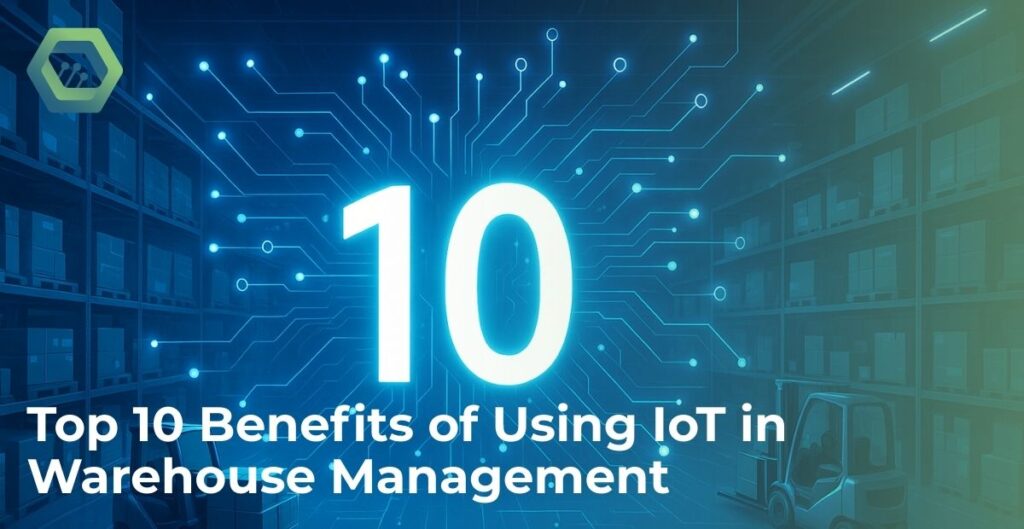The world of logistics and warehousing is changing rapidly, and IoT in Warehouse Management is leading that change. With smarter technologies, warehouses are becoming more efficient, accurate, and scalable. If you’re managing inventory or operations, understanding the benefits of integrating IoT in Warehouse Management | Smarter Warehousing 2025 is essential to stay competitive.
Let’s explore the top 10 benefits of using IoT in Warehouse Management in 2025 | Smarter Warehousing 2025.
1. Real-Time Inventory Tracking
One of the most significant advantages of IoT in Warehouse Management is real-time inventory tracking. Smart sensors and RFID tags help you monitor stock levels instantly. This means no more manual counts or outdated data. You can know exactly where your products are, reducing errors and improving decision-making.
2. Enhanced Accuracy and Reduced Errors
Using IoT in Warehouse Management helps eliminate human error. Automated data collection ensures high accuracy in tracking inventory, shipments, and storage. By reducing mistakes, you save money and improve customer satisfaction.
3. Improved Warehouse Efficiency
With IoT in Warehouse Management, tasks like picking, packing, and shipping are optimized. Smart shelves and robots can guide workers, identify items faster, and even automate repetitive tasks. This leads to faster turnaround times and smoother operations.
4. Predictive Maintenance of Equipment
Warehouses rely on machines—conveyors, forklifts, and sorting systems. IoT in Warehouse Management enables predictive maintenance by monitoring equipment health. This means fewer breakdowns, reduced downtime, and longer equipment life.
5. Real-Time Location of Assets and Staff
Tracking isn’t just for products. With IoT in Warehouse Management, you can locate staff, vehicles, and tools instantly. This improves safety and productivity. For example, if a forklift is idle or being misused, you’ll know right away.
6. Energy Management and Cost Savings
Energy usage is a huge cost in warehouses. IoT in Warehouse Management lets you monitor lighting, heating, and machinery usage in real-time. This data helps you reduce waste and cut down on energy bills.
7. Better Decision-Making with Analytics
The data collected through IoT in Warehouse Management offers valuable insights. You can analyze trends, detect inefficiencies, and make data-driven decisions. Whether it’s optimizing shelf layout or restocking schedules, you’ll have the right information at your fingertips.
8. Enhanced Safety and Compliance
Worker safety is critical. IoT in Warehouse Management can alert you to hazards like temperature spikes, gas leaks, or blocked exits. Smart wearables can also monitor worker health and movement, ensuring better safety compliance.
9. Seamless Integration with ERP Systems
Many businesses already use ERP software. IoT in Warehouse Management integrates easily with these systems, offering a full view of operations. This means smoother workflows, from ordering to shipping.
10. Scalability and Flexibility
Whether your warehouse is growing or changing focus, IoT in Warehouse Management adapts with you. New sensors, devices, or software can be added without overhauling your entire system. This flexibility helps you scale up or down quickly based on business needs.
The Future of IoT in Warehouse Management
As 2025 unfolds, the use of IoT in Warehouse Management is no longer optional—it’s a must-have for businesses looking to thrive. With supply chains becoming more complex and customer demands rising, having real-time visibility and control over your warehouse operations is key.
Why Businesses Are Adopting IoT in Warehouse Management
Across industries—from retail to manufacturing—companies are turning to IoT in Warehouse Management to streamline operations. The competitive advantage gained through automation, visibility, and data is undeniable.
As more devices become connected and affordable, even small and mid-sized warehouses can benefit from IoT in Warehouse Management without high upfront costs.
Challenges and Considerations
While the benefits are clear, implementing IoT in Warehouse Management does come with challenges. Data security, initial setup costs, and staff training are a few factors to consider. But the long-term return on investment far outweighs these concerns.
With the right plan, vendors, and tools, you can successfully implement IoT in Warehouse Management with minimal disruption.
Conclusion: Future-Proof Your Warehouse with OmniWOT
If you’re ready to take the next step, OmniWOT’s advanced platform is designed to help businesses harness the full power of IoT in Warehouse Management. From real-time monitoring to predictive analytics, OmniWOT offers scalable, plug-and-play solutions that work with your existing systems.
Whether you’re just starting or upgrading, OmniWOT makes it easy to adopt IoT in Warehouse Management without heavy infrastructure costs.
Embrace smarter warehouse management today. Explore what OmniWOT can do for your business.


